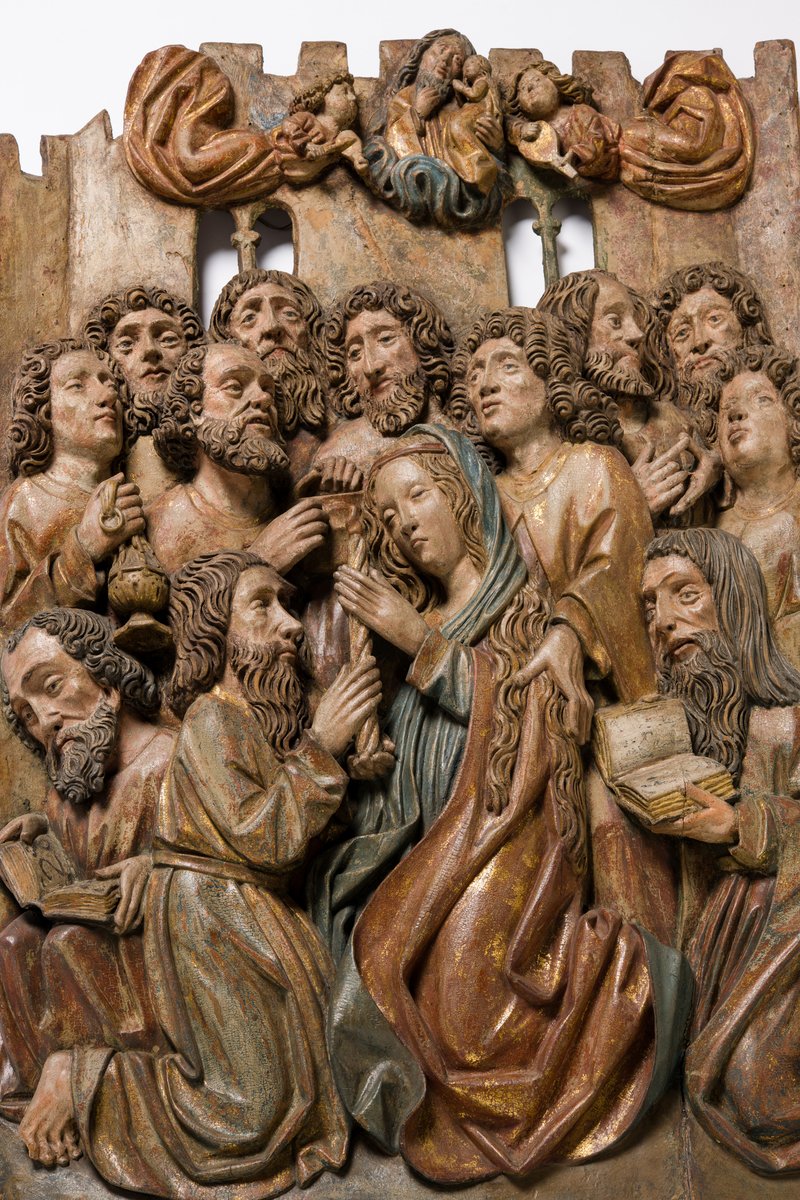
Death of the Virgin
Sculptures
| Artist | |
|---|---|
| Culture | Spanish |
| Date | late 13th century |
| Object type | sculpture |
| Medium, technique | carved, gilded and painted wood |
| Dimensions | 81.5 × 35 × 21 cm |
| Inventory number | 61.4 |
| Collection | Sculptures |
| On view | Museum of Fine Arts, First Floor, European Art 1250-1600, Gallery XII |
The iconographic type of the Virgin and Child with Saint Anne arose during the thirteenth century. The sculptor of this work, who seems to have been from Castile, portrayed the two holy women in a frontal view: Saint Anne is holding a flower-shaped sceptre in her right hand, while the Virgin Mary with her Child is sitting in her lap. The head of the Christ Child is turned slightly to one side, which softens what is otherwise a strictly frontal composition. Fragments of the paint layers from the medieval period were revealed during the restoration of the statue. However, the original painted surface had not survived in entirety. For this reason, at the bottom of Saint Anne’s cloak the next layer of paint, stemming from the sixteenth century, has been kept. Features of the Romanesque tradition include heavy contouring of the eyes and reddening of the faces. In contrast, the soft pleating of the draperies is a hallmark of the Gothic style.
Balogh, Jolán, Katalog der ausländischen Bildwerke des Museums der bildenden Künste in Budapest, IV – XVIII. Jahrhundert: 1. Textband Bd. 1, Akadémiai Kiadó, Budapest, 1975, p. 208., no. 294.
Szmodisné Eszláry, Éva, A Régi Szoborgyűjtemény kincsei, Szépművészeti Múzeum, Budapest, 1994, p. 31, ill. 26.
Szmodisné Eszláry, Éva, The treasures of the Old Sculpture collection, Szépművészeti Múzeum, Budapest, 1994, p. 31.
The Museum of Fine Arts Budapest: guide, Museum of Fine Arts, Budapest, 2006, p. 143, no. 189.
This record is subject to revision due to ongoing research.